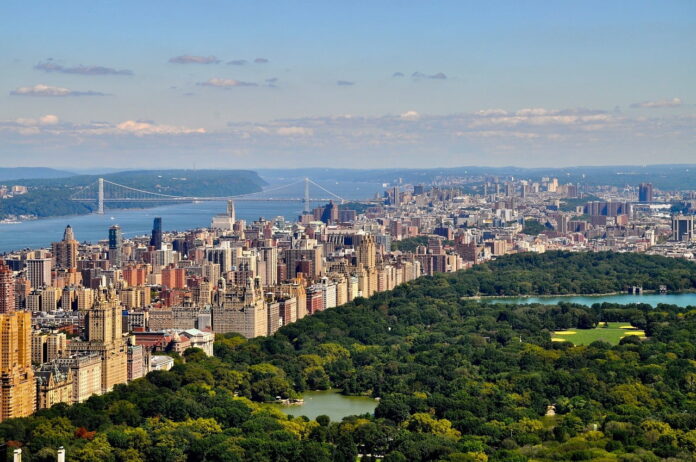The concept of sustainable living in urban environments is increasingly gaining traction as cities grapple with the challenges of population density, pollution, and resource constraints. A critical element in the quest for sustainability within these concrete landscapes is the integration and preservation of urban green spaces. These pockets of nature amidst the urban sprawl are not just aesthetic enhancements; they are vital to the ecological and social fabric of city life.
The Role of Green Spaces in Sustainability
Urban green spaces are fundamental to the sustainable development of cities. They serve as natural carbon sinks, absorbing CO2 and other pollutants from the air, which mitigates the effects of climate change and reduces the urban heat island effect. This cooling phenomenon is crucial in cities where concrete and asphalt absorb and radiate heat, leading to significantly higher temperatures compared to surrounding areas. Furthermore, green spaces contribute to the preservation of biodiversity by providing habitats for various plant and animal species, maintaining ecological balance even within densely populated areas.
The sustainable benefits of urban greenery extend to water management. These areas can play a pivotal role in stormwater absorption, reducing runoff and preventing the overloading of city drainage systems. This natural infiltration process also helps to purify water by filtering pollutants, leading to cleaner rivers and lakes. Additionally, green spaces often serve as a focal point for sustainable community initiatives, such as urban agriculture and community gardens, which promote local food production and reduce the environmental footprint associated with food transport.
Beyond their environmental impact, urban green spaces are essential in fostering sustainable behaviors and lifestyles among city dwellers. They encourage outdoor activities and active modes of transportation like walking and cycling, thereby reducing reliance on fossil fuels. By providing accessible and enjoyable natural settings, green spaces can nurture a community’s connection to the environment, cultivating a collective consciousness geared towards sustainability and conservation efforts.
Health & Social Perks of Urban Nature
The presence of green spaces within urban settings has a profound impact on the mental and physical health of residents. Studies have shown that regular access to nature can reduce stress, anxiety, and depression, contributing to the overall well-being of individuals. The tranquil environment of a park or garden offers a much-needed respite from the hustle and bustle of city life, serving as a sanctuary for relaxation and rejuvenation. The visual stimulus of greenery has also been linked to faster recovery rates in patients, indicating that nature can have tangible health benefits.
Socially, urban green spaces act as communal hubs where people of all ages and backgrounds can interact, fostering a sense of community and belonging. These areas provide safe environments for children to play and adults to exercise, promoting an active lifestyle that combats the sedentary tendencies associated with urban living. Moreover, public parks and gardens are venues for cultural and recreational events that enrich the social fabric of the community, enhancing the quality of life and social cohesion among city residents.
The accessibility of green spaces is equally important in addressing social inequality. In many cities, there is a disparity in the distribution of greenery, with affluent neighborhoods often enjoying more and better-maintained parks. Ensuring equitable access to urban nature is crucial for the health and well-being of all citizens, regardless of their economic status. By democratizing access to green spaces, cities can take significant strides towards social sustainability and inclusivity.
Urban Greenery & Environmental Resilience
Urban green spaces are not only beneficial for immediate human use but also play a critical role in enhancing a city’s resilience to environmental challenges. Parks, gardens, and tree-lined streets can act as buffers against natural disasters such as floods and storms by absorbing excess rainwater and reducing runoff. This natural defense mechanism is particularly valuable as the frequency of extreme weather events increases due to climate change. The strategic placement of green areas can also protect against soil erosion and stabilize the land.
In the face of rising temperatures, urban green spaces offer a natural cooling effect that can significantly reduce the need for air conditioning, thereby lowering energy consumption and greenhouse gas emissions. The shade provided by trees and the evapotranspiration process help to regulate microclimates within cities, making urban environments more tolerable during heatwaves. This adaptive capacity of greenery is essential in maintaining the livability of cities as global temperatures continue to climb.
Furthermore, urban biodiversity hotspots are vital for the long-term resilience of ecosystems. By serving as genetic reservoirs and migration corridors for wildlife, green spaces enable species to survive and adapt to changing urban landscapes. Maintaining this biodiversity is crucial for ecological stability and the health of the planet. As cities expand, it becomes increasingly important to integrate green infrastructure that supports the resilience of both human and natural communities.
Urban green spaces are indispensable in cultivating sustainable, healthy, and resilient cities. Their role in environmental sustainability, combined with the health and social benefits they provide, makes them a critical element in the design of modern urban landscapes. As cities continue to grow, the integration of green infrastructure will be pivotal in ensuring that urban living remains both viable and desirable. To achieve this, a concerted effort from city planners, policymakers, and residents is required to protect and expand these natural sanctuaries. By embracing the multifaceted benefits of urban green spaces, we can pave the way for a greener, more sustainable future for city dwellers around the world.
